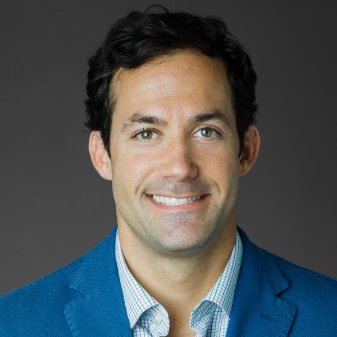Meet one of CBRE’s most prominent tenant representation brokers – Brad Serot. Having been involved in over 6 million square feet of transactions valued at more than $5 billion, Brad knows a thing or two about the Chicago market. Check out what he has to say about what really separates old school office spaces from the progressive ones.

Brad thanks for chatting with us, first off, we’re wondering – what’s the real difference between an “old school/traditional” office and a “progressive” one?
Part of CBRE’s Workplace Strategy is to take a close look at what actually makes a workspace progressive – and it’s not quite as straightforward as big open lofty spaces and yoga mats.
The main difference comes down to variety and amenities. Traditional offices have just a handful of workspaces and amenities, while the progressive ones are focusing on creating collaborative spaces to cater to the multiple ways people work. These next generation spaces are offering employees the creative freedom to choose a workspace that fits them—Instead of a company dictating to workers where they should sit to get their work done in the old school model. Progressive workplaces are where people have control over their environment—where they can easily collaborate and feel like part of the culture, and interact in a variety of ways to support their work.
What kinds of companies are we talking about when we say, “old school”?
These are the companies that have been around for decades to centuries and have not only specific, more traditional style work environments, but cultures that have evolved over time that were built on a hierarchical work environment. These are law firms, older management consulting companies, and some of the huge banks—many of these still have workspaces with traditional “tiered” offices. We’re seeing a trend of these more “traditional” type organizations really focusing on workplace strategy and change. To stay competitive, they know it will require a shift in their workplace to recruit the best and brightest.
The variety within a workplace is interesting – can you tell us more about this?
In a traditional office, you only have a handful of choices of where to do your work. You can work in an office (if you have one), a large or small conference room, or at your desk. The old school offices are filled with rows and rows of identical workstations or compartmentalized offices, with walled-in offices lining the perimeter, and of course, this is where you’ll find the coveted corner offices.
Now on the flip side, at CBRE’s current progressive office for example, we have 14 unique workplaces. We aim to be simple, fun, and flexible – accommodating all the ways people like to live and work. The setting is everything—It’s easier to be productive, inventive, and happy if you’re working in a vibrant, flexible space than in a symmetrical gray space.
Can you give us some examples of these kinds of spaces?
Many of these next gen spaces literally tore down their office walls, so you’ll find workers getting stuff done at unassigned desks (hoteling), treadmill desks or standing desks, in an office, a collaborative space with couches, a café within the workspace, a terrace, a lobby, hallways with benches, and heads down spaces like enclosed phone rooms with a single chair, a desk, and no distractions.
Every space in a progressive office serves more than one purpose. A lunchroom can’t just be used for eating. It needs to be used as a meeting and collaboration space or an individual workspace. The key, is that all of these spaces have the proper technology to support the employees for whatever their needs may be.
What kinds of fun amenities are you seeing?
In the old school buildings, amenities are usually limited to just a restaurant or two or a coffee shop. If you’re in the Chicago Loop, you’ll have dozens of options within a short walk.
Progressive offices are offering smart amenities and thinking way beyond free coffee and fruit in the break room. They’re integrating yoga, meditation or total wellness rooms – whatever you want to call them – they’re spaces for employees to escape work for their mindfulness and wellness, which in turn lets them bring their best selves back to work.
Landlords are also having fun testing out new amenities, like video game rooms, ping pong tables, golf simulators, and also some very practical ones like shuttle service.
Food is very important too, keeping fresh and healthy food within reach saves employees both time and money. Workers don’t need to leave the building, or get an unhealthy snack from the vending machine—a big win for employees and employers.
A big thanks to Brad for chatting with us. Stay tuned for part 2, where Brad talks about the future of the Next Generation workspace, who’s doing it right, and how companies can attract and retain top talent without a total renovation.
More about Brad:
As a real estate advisor, Brad represents a full spectrum of sophisticated clients ranging from some of the largest financial services firms in the country to the fastest growing tech companies in the world. Additionally, he leads CBRE’s Chicago Tech and Digital Media Practice Group. The dynamic nature of his clients’ requirements has provided him with a unique and deep knowledge of the rapidly changing Chicago market. As his clients’ needs evolve—he counsels them on a local, national and global scale. In deals ranging from 1,000 to 500,000 square feet, he’s negotiated over 6,000,000 square feet of transactions valued at more than $5 billion.





